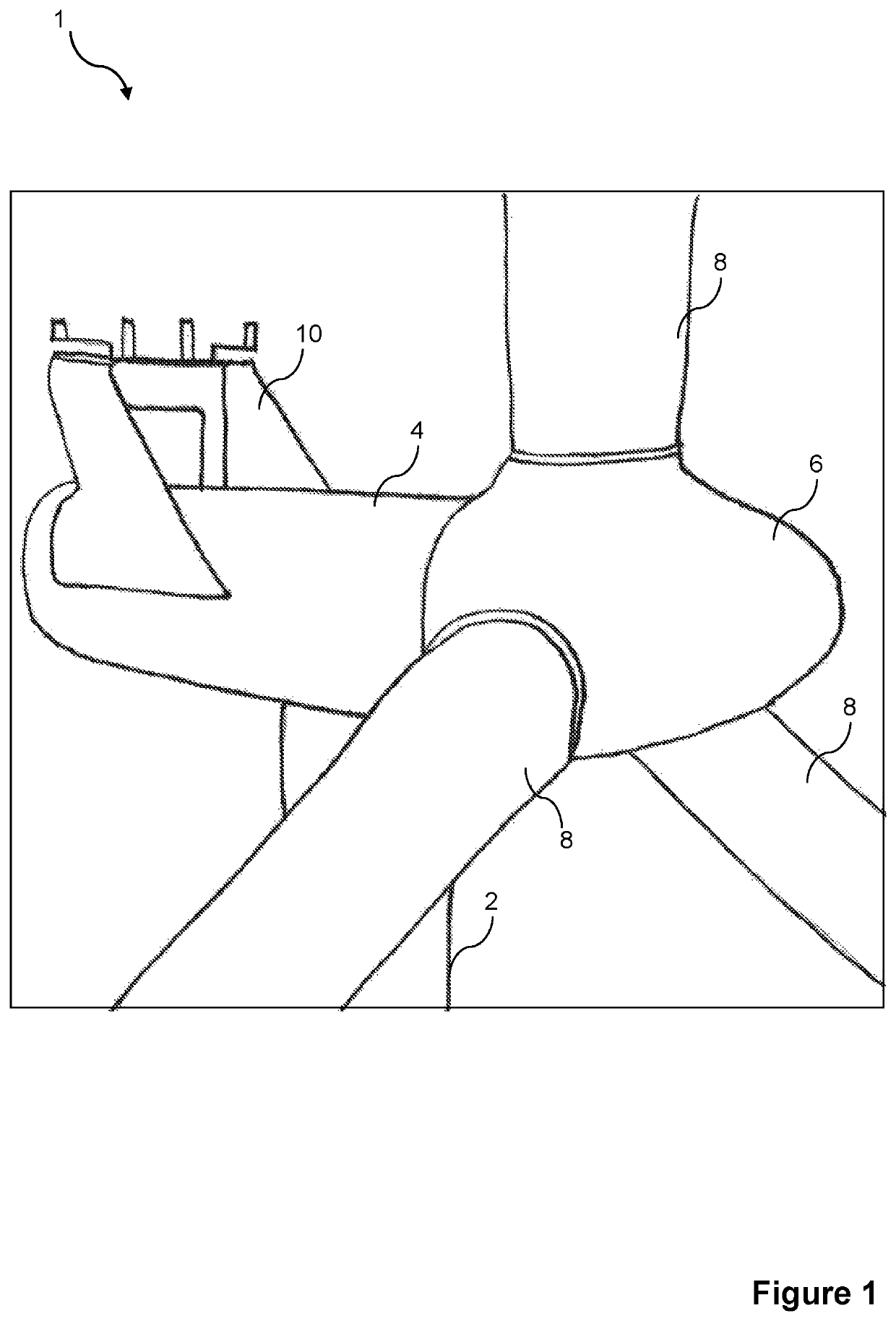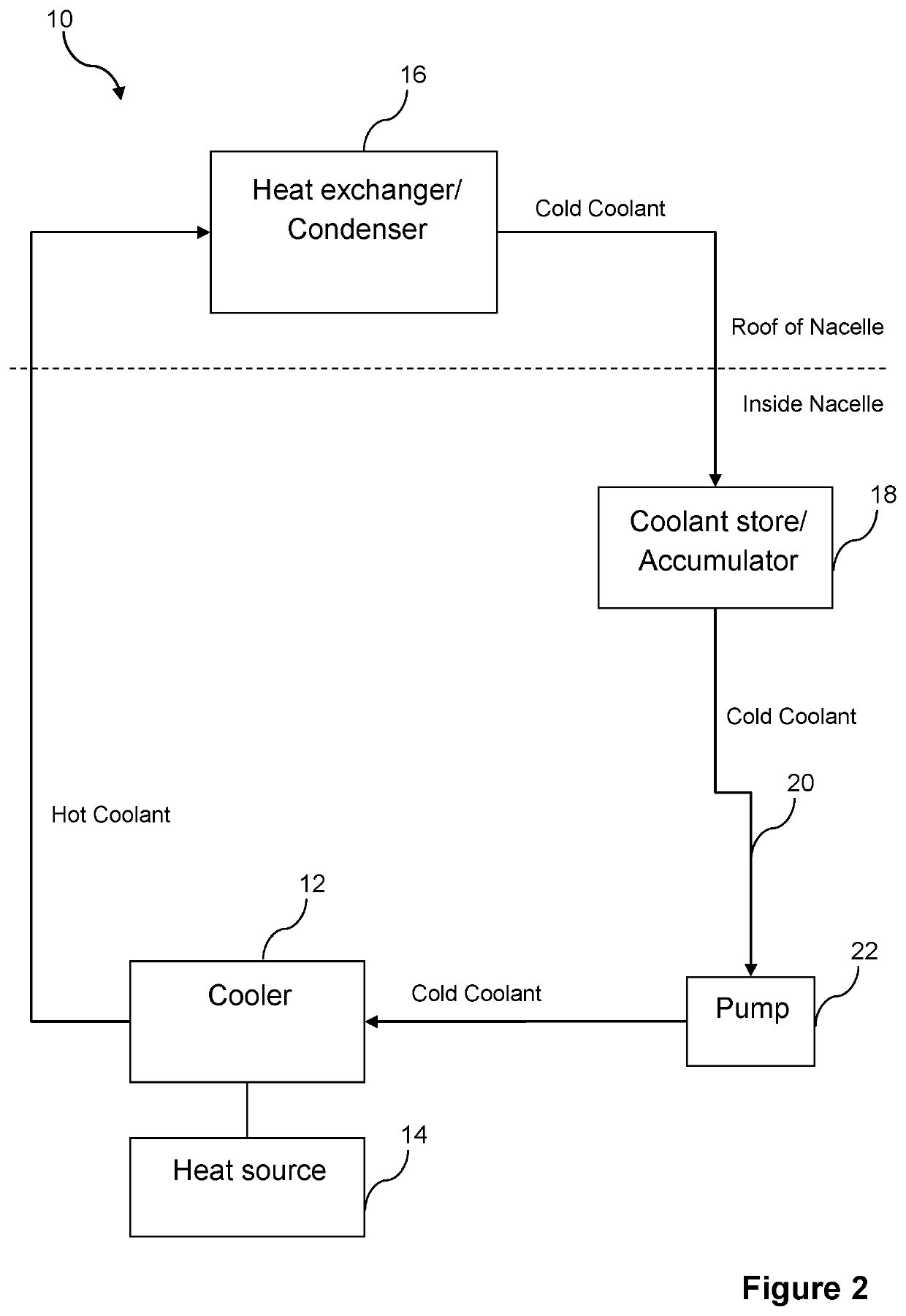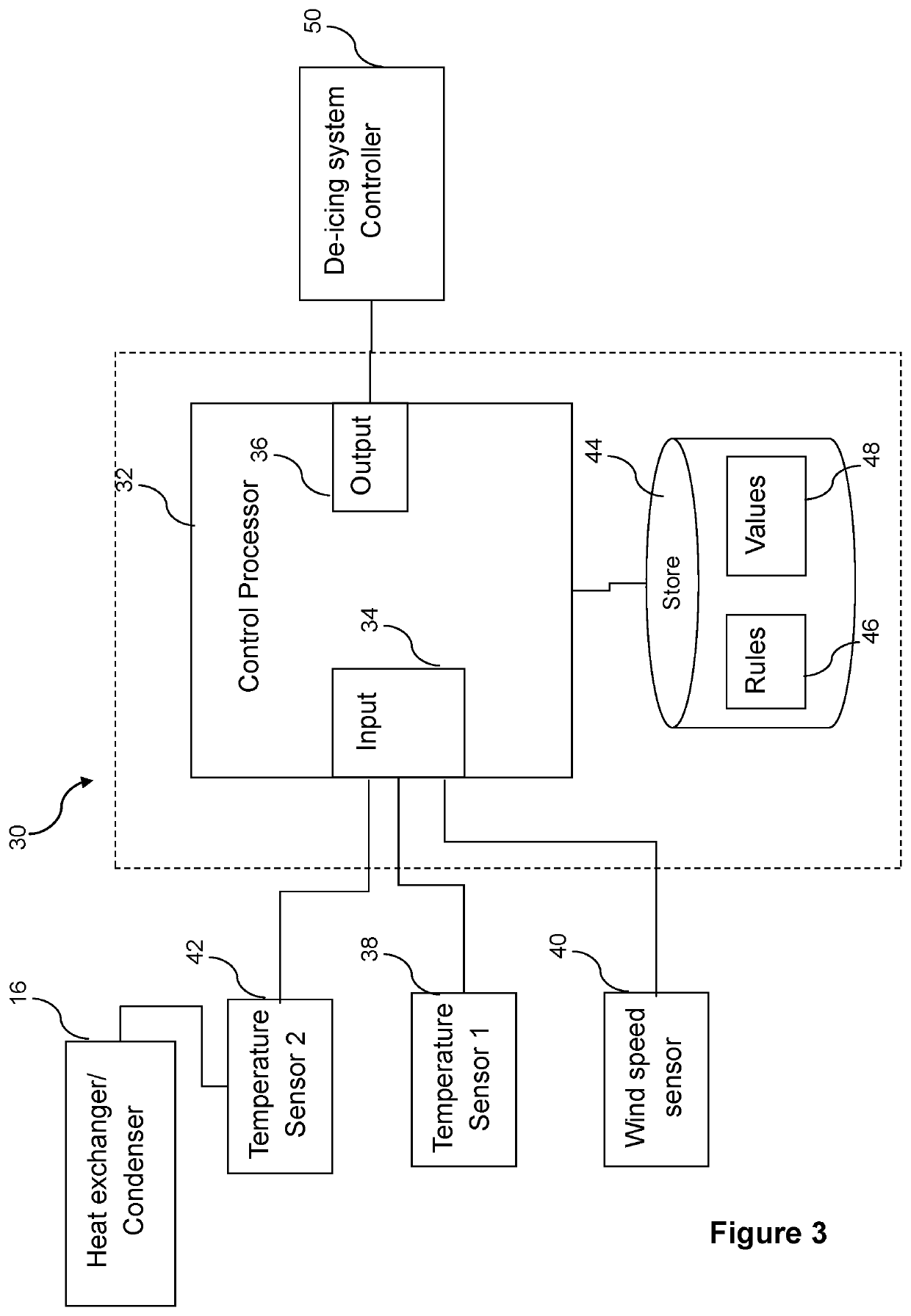Apparatus and methods for determining icing risk in wind turbines
a wind turbine and ice risk technology, applied in the direction of motors, engine control, wind energy generation, etc., can solve the problems of affecting the power production efficiency and force of the rotor, the likelihood of ice build-up on the wind turbine blade is high, and the subsequent removal of ice may not occur at a sufficiently fast rate to counter the re-formation of ice on the blades. , to achieve the effect of increasing (or preventing further decrease of) wind turbine power
- Summary
- Abstract
- Description
- Claims
- Application Information
AI Technical Summary
Benefits of technology
Problems solved by technology
Method used
Image
Examples
Embodiment Construction
[0030]A specific embodiment of the invention will now be described in which numerous specific features will be discussed in detail in order to provide a thorough understanding of the inventive concept as defined in the claims. However, it will be apparent to the skilled person that the invention may be put in to effect without the specific details and that in some instances, well known methods, techniques and structures have not been described in detail in order not to obscure the invention unnecessarily.
[0031]In order to place the embodiments of the invention in a suitable context, reference will firstly be made to FIG. 1, which illustrates schematically a portion of a typical wind turbine in which an apparatus for determining icing risk and for controlling a sub-system of the wind turbine according to an embodiment of the present invention may be implemented.
[0032]The wind turbine 1 comprises a tower 2, a nacelle 4 rotatably coupled to the top of the tower 2, a rotating hub 6 moun...
PUM
 Login to View More
Login to View More Abstract
Description
Claims
Application Information
 Login to View More
Login to View More - R&D
- Intellectual Property
- Life Sciences
- Materials
- Tech Scout
- Unparalleled Data Quality
- Higher Quality Content
- 60% Fewer Hallucinations
Browse by: Latest US Patents, China's latest patents, Technical Efficacy Thesaurus, Application Domain, Technology Topic, Popular Technical Reports.
© 2025 PatSnap. All rights reserved.Legal|Privacy policy|Modern Slavery Act Transparency Statement|Sitemap|About US| Contact US: help@patsnap.com



